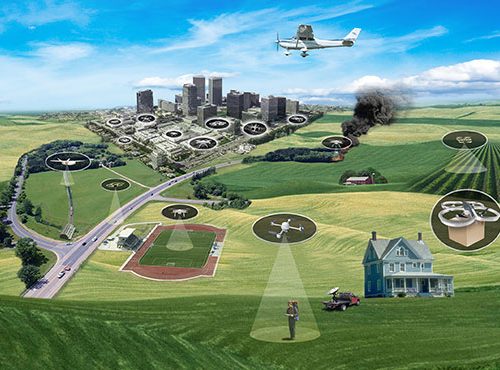NASA field tested interactions between concurrent drone operations using various Unmanned Service Suppliers (USS) within a shared airspace volume under the Federal Aviation Administration (FAA) UTM Pilot Programme. The fourth Technology Capability Level (TCL) field tests at the Lone Star UAS Center of Excellence & Innovation test site in Corpus Christi in mid-August 2019 looked at managing the increased complex of multiple drone flights taking place concurrently within the same airspace. TCL4 represents the final phase of a four-part, multi-year NASA project dedicated to researching, testing, and refining core technologies for UTM. Other partners include AirMap and the Nevada Institute for Autonomous Systems in Reno.
In this latest TCL field test, Lone Star UAS, in conjunction with the City of Corpus Christi, the Corpus Christi Police Department, the Corpus Christi Fire Department, the Port of Corpus Christi, and the Corpus Christi International Airport, flew aircraft in and around the downtown Corpus Christi area.
A change in the flight plan connected to the same, or different, USS forces a reaction by all USS in the operational area to de-conflict and maintain safe separation from other aircraft and obstacles. According to the report published by AirMap, TCL4 seeks to establish a common protocol for the communication of safety-critical data for a number of capabilities. These include: Strategic de-confliction at the early stage of flight planning prior to take-off; Tactical de-confliction during the in-flight phase of the operation; Off-nominal reporting when a drone fails to conform with airspace restrictions; Prioritisation of authority operations; Contingency plans; and UAS volume reservation.
TCL4 addressed safety and conflict resolution concerns for drone operations in shared airspace. Future trials are planned to address more advanced separation capabilities, including separation minima, detect-and-avoid technologies, air- or ground-based collision avoidance, intent-based avoidance procedures, and tactical de-confliction at different phases of drone operation.
(Image: NIAS)
For more information visit:
https://utm.arc.nasa.gov/index.shtml
www.airmap.com/airspace-safety-collaboration-nasa-utm-tcl4-trials-nevada-texas/




